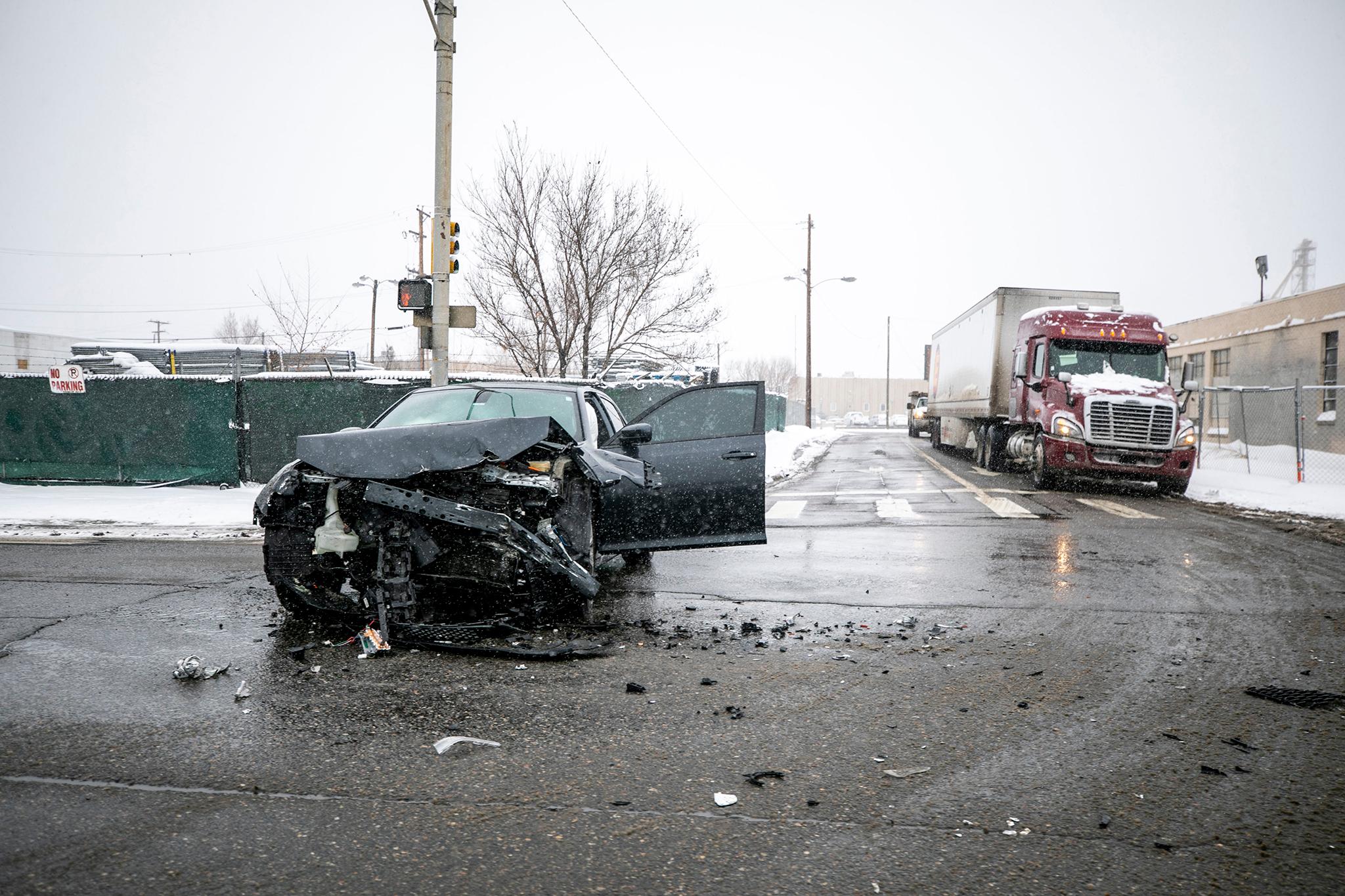Denver and Vision Zero, the city's initiative to completely eradicate traffic deaths and serious injuries by 2030, is receiving some funding to help further the mission.
The city was awarded $576,000 from the U.S. Department of Transportation's Safe Streets and Roads for All grant program to research safety improvements for nine corridors across Denver. All of the corridors are a part of Denver's high-injury network, which accounts for 50% of traffic deaths.
The grant program is a part of a Bipartisan Infrastructure Law that allocated $800 million to fund the Vision Zero goal at regional, local and Tribal levels.
In a press release, the Department of Transportation and Infrastructure said they would utilize the grant funding to hire an independent team to examine the selected roadways and identify new safety measures using a Road Safety Audit, which takes into account "the safety of all road users and human factors that may contribute to unsafe road conditions."
The audits take into account crash reports and data, along with field observations during all hours and days.

Jill Locantore, the executive director of safer streets The Denver Streets Partnership, a coalition of community groups that advocate for safer streets, said the group was supportive of DOTI requesting the funding and ultimately wrote a letter of support to the grant program.
Locantore said she hopes the funding will be used on big picture items instead of "quick fixes," which Locantore said works but isn't working enough. She pointed to a section of East Colfax between the Colorado State Capitol and East High School. DOTI installed bollards and pedestrian median islands that force drivers to slow down and yield to pedestrians. It's effective but not sufficient.
"What we really need to be talking about is the fundamental transformation of these corridors," Locantore said. "What a lot of them have in common is that they're trying to be two fundamentally incompatible things at the same time. They're trying to be main streets... and they're also trying to be highways...We need to pick a side."
The funding should be used to make the roads more public transportation friendly, like creating more bus rapid transit lanes and fixing bus stops by adding benches, covers and lighting, Locantore said, adding that the ultimate way to get to zero traffic fatalities is to get folks out of their cars.

Since Vision Zero was implemented in 2017, traffic fatalities have increased every year, except 2020, which saw a significant decrease due to stay-at-home orders and people working remotely. In 2021, traffic fatalities reached an all-time high with 84 deaths, surpassing Denver's 2019 record high of 71 people.
Last year, there were 82 fatalities in 78 crashes, according to data from the Denver Police Department. Three crashes resulted in the death of two people and one of the fatalities involved a pedestrian and a train.
DPD said 42 of the 78 crashes occurred on semi-major streets such as N. Lowell Boulevard or S. Yosemite Street and 31 crashes happened on major streets such as E. Alameda Avenue, Broadway and East Colfax Avenue.
According to DPD, the "most prominent factors" in the crashes were seatbelt usage and pedestrian involvement. DPD said out of the 78 crashes, 25 involved a pedestrian and pedestrians "were considered at fault" for 15 of those crashes. Those reasons included failure to obey traffic signs and being in the roadway improperly.
Of the 53 crashes that didn't involve a pedestrian, 36 incidents were caused due to not wearing a seatbelt.
Most crashes occurred at night (42) and 17 of those crashes were hit-and-runs.

DOTI said through the grant-funded audits, the goal is to make Denver streets "safer and [a] more comfortable environment for people." DOTI added that audits were completed on eight different corridors, including Federal Boulevard between 46th Avenue and 52nd avenue and Quebec Street between 26th Avenue and Smith Road. Work is being done on those corridors that include sign changes and improving traffic signal infrastructure.
According to Vision Zero dashboard, 14 people have died in traffic crashes as of Feb. 17.
With a new mayor and possible set of council members, transportation issues have been on the mind of all Denverites. Locantore said she hopes the administration changes and funding will get that dashboard down to zero.
"I don't blame people for driving the way they do on these corridors. They're responding to the design of the street," Locantore said. "The street is telling them this is the highway, you should go as fast as you can and that's why we need to fundamentally redesign the street and start taking away some of that space from cars...Instead there's a bus lane and a bike lane and a very wide sidewalk and street trees. We see that people naturally drive slower and more carefully in those circumstances."
Here's a list of the corridors that will be studied:
Alameda Avenue from Kearney Street to Fairmount Drive
Broadway from E. Colfax Avenue to 29th Street
Colorado Boulevard from Mississippi Avenue to Iliff Avenue
Speer Blvd from Federal Blvd to Elitch Circle
University Blvd from Iowa Avenue to Yale Avenue
W. 38th Avenue from Federal Blvd to Fox St
Evans Avenue from Colorado Blvd to Quebec St
Tower Road from 45th Avenue to 56th Avenue
Tower Road from 56th Avenue to 71st Avenue














